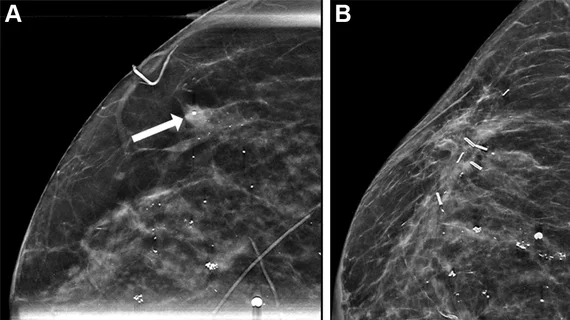New data on DCIS surveillance imaging has experts concerned
New data reveal that a concerning number of women do not follow through with recommended surveillance imaging following treatment for breast cancer.
A paper published in Radiology Jan. 10 shows that just over half of the more than 12,000 women included in the analysis completed recommended surveillance imaging throughout the first five years following their diagnosis of ductal carcinoma in situ (DCIS). Equally unsettling was that follow-up imaging adherence was found to be even lower among Black and Hispanic women, suggesting that racial disparities in breast cancer care continue to persist.
In an editorial accompanying the paper, co-authors Habib Rahbar and Brian N. Dontchos, a professor and an associate professor of radiology at the University of Washington, praised the researchers for portraying the magnitude of inequities in breast cancer care, but cautioned that these findings could be just a small glimpse into the severity of the disparities.
“Since DCIS is almost entirely diagnosed at screening mammography and screening is less common in women from a lower socioeconomic background and in women who are uninsured, any identified differences are likely just the tip of the iceberg of structural racism in medicine,” the authors stated.
DCIS has excellent disease-specific survival odds, but women who are treated by way of breast-conserving surgery have a 20% or higher risk of recurrence within ten years. For this reason, annual surveillance imaging via bilateral mammography is recommended for women who have undergone treatment for DCIS.
Out of the 12,559 women included in this most recent research, 52% adhered to recommended surveillance imaging guidelines. White women were more likely than both Black and Hispanic women to routinely complete surveillance imaging, as were women with private insurance in comparison to those who were on government insurance.
The detection rate for invasive recurrences was also found to be higher in women who started surveillance imaging within one year of their treatment.
Corresponding author of the paper Marc D. Ryser, with the Department of Population Health Sciences at Duke University Medical Center, and colleagues explained that those detection rates were likely higher due to intense surveillance, rather than increased risk factors.
“Our findings suggest that invasive in-breast recurrences may be found earlier in women who adhere to the guidelines,” the authors noted.
Although findings relative to those who were able to routinely comply with follow-up imaging were positive in terms of catching recurrences in their earliest stages, the team maintained that there is still a great need for more intentional efforts to increase surveillance imaging adherence among those most affected by healthcare inequities.
To learn more, click here.

